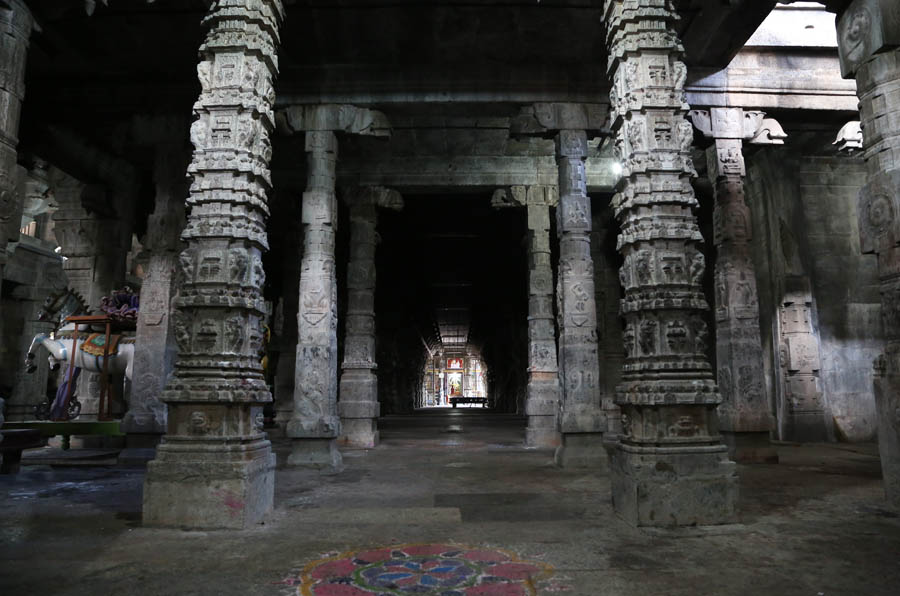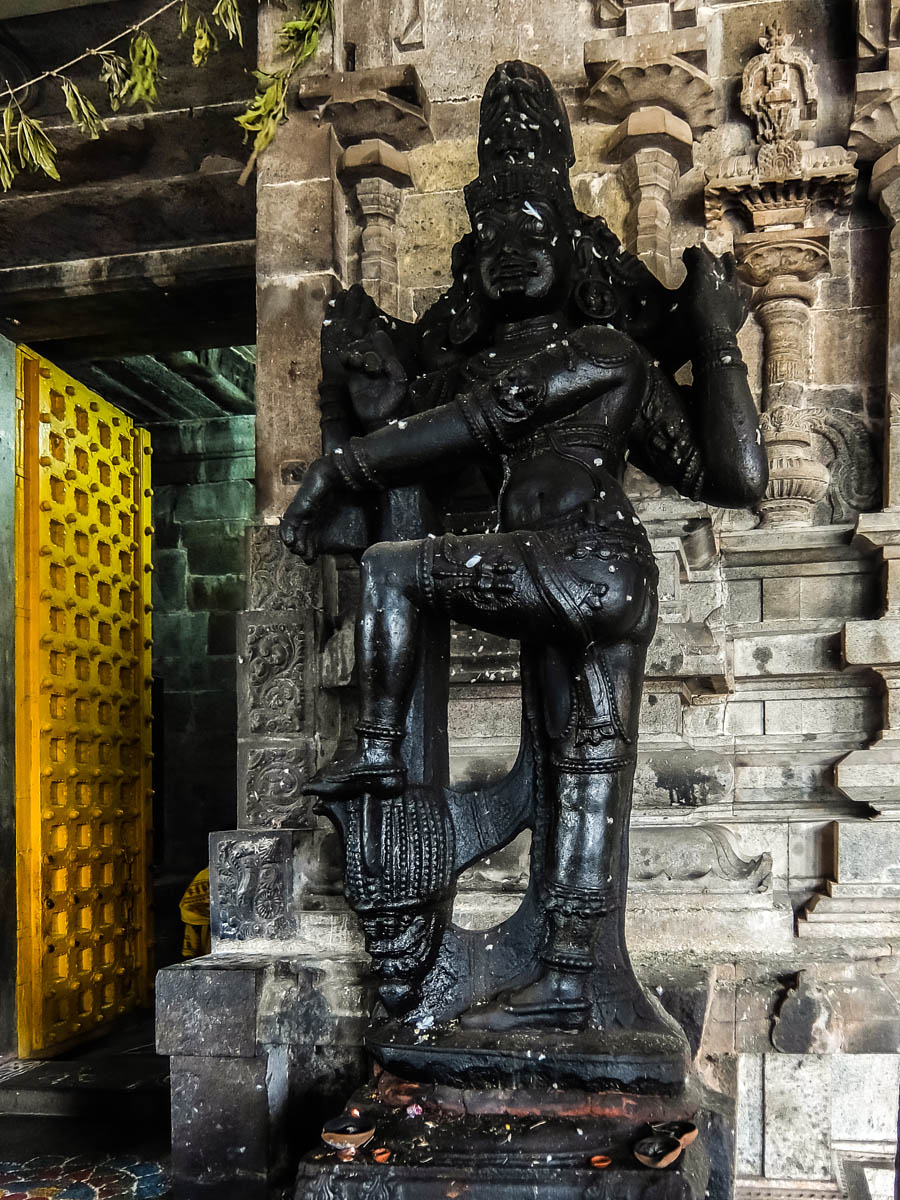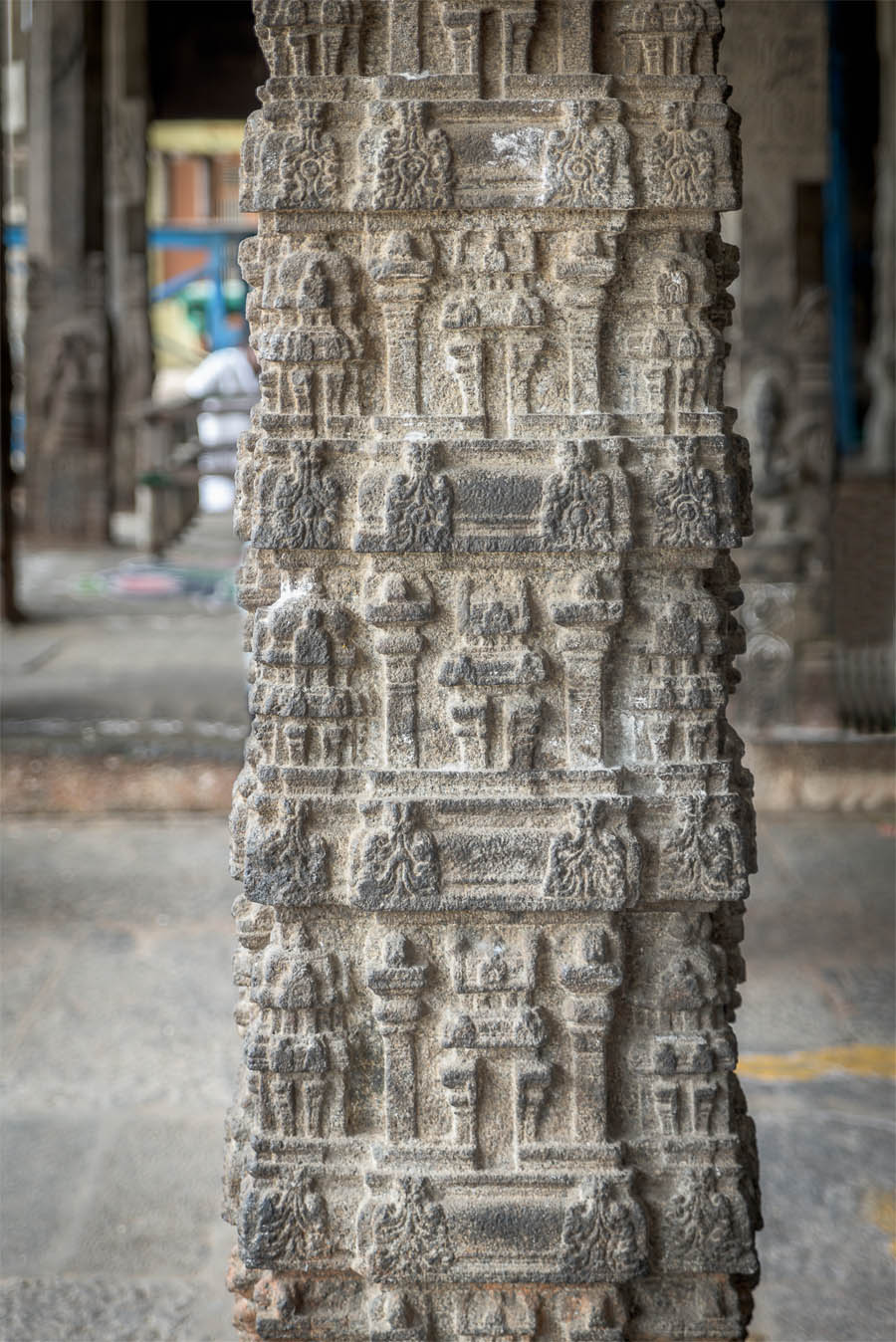
Ekambareswarar Temple, Kanchipuram, Tamil Nadu
The Ekambareswarar Temple
It is a fascinating temple with a rich history, and the holy gravitas that it endures is something worth discussing. It is one of the temples associated with Panch Bhoota Stalam.
Panch Bhoota Stalam constitutes the five temples dedicated to Lord Shiva. And these five temples hold prominent fundamental meanings. Being the manifestation of the five elements of nature: Earth, Water, Fire, Air, and Space, Representing the fundamental meaning of life itself, the five elements with which every life is made.
Ekambareshwarar is one of the temples representing the element earth or Prithvi. Also known as Ekambaranathar Temple. Lord Shiva is worshiped and represented by the Shiva Lingam named Ekambareshwarar or Ekambaranathar. Goddess Parvati, his consort, is revered as Elavarkuzhali. Ekambareshwar is among the seven most important pilgrimage centers in India and attracts numerous tourists. It is one of the largest temples in Kanchipuram. The temple complex spread across 40 acres.

History of The Temple
This ancient temple is in existence since at least 600 AD. It is thousands of years old brought down and rebuilt by various kings.
Pallavas initially built the temple. Kachiyapper was a poet and a Vedantist. He served as a priest at the temple, which was pulled down and was rebuilt by the Chola Kings.
Later in the 15th century, the succeeding Vijayanagar era, Several significant structural contributions to the temple were made by the Vijayanagar king Krishna Deva Raya.
Many architectural wonders were associated with this ancient temple, like the thousand-pillared hall, which was built during the Vijayanagar period.
The four gateway towers called Gopurams. The largest one being the southern one with 11 stories and a height of 192 ft, simply concluding it among the tallest temple towers in India.
In the present day, the Hindu Religious and Charitable Endowments Department of the Government of Tamil Nadu is administrating and maintaining the temple. This beautiful historic temple is simply one of the most prominent attractions for the tourists.
Stories behind the temple
There’s a very interesting story about the temple. Goddess Parvati was doing intense penance to win over Lord Shiva under the temple’s ancient Mango tree near the Vegavathi river.
Lord Shiva wanted to test her devotion, so he set her on fire. In order to ask for help, Goddess Parvati started praying to her brother, Lord Vishnu. To save Parvati, Vishnu took the moon from Lord Shiva’s head and showered its rays onto the mango tree and Parvati to cool it down.
To check how persistent Parvati is, Lord Shiva again sent river Ganga to threaten and disrupt Parvati’s penance. But Parvati requested Ganga and convinced her that they are sisters and worship the same supreme power, Lord Shiva. Ganga accepted her request and did not harm her and agreed not to disrupt her penance.
To worship and with the wish to get united with Lord Shiva, Parvati made a Shiva Lingam out of the sand. Impressed by Parvati’s devotion, Lord Shiva descended into a human and married Parvati.
Lord Shiva settled there in the form of the Lingam Parvati worshiped. Lord Shiva here came to be known as Ekambareswarar or Lord of Mango Tree.
As per another story, Parvati was worshiping Lord Shiva under a mango tree in the form of Prithvi Lingam, a lingam which she made out of the sand. Vegavati, The nearby river, threatened to engulf the Shiva Lingam by overflowing. Parvati or Kamakshi, devoted to Shiva, embraced the Lingam to protect it even at the cost of her life. This gesture of Parvati touched Lord Shiva. He materialized in person and married her.


Saints and Literary Mentions:
When it comes to literary mentions, this temple has been mentioned in several texts over the centuries. The three most prominent Saivite poets of the 7th and 8th century Sambandar, Appar, and Sundarar mentioned Ekambareswarar in ten verses in Tevaram, The first seven volumes of the Tirumurai, the Twelve-volume collection of Shiva devotional poetry.
Manickavasagar, a 9th-century Tamil saint and poet who used to write Shiva hymns, also honored Ekambareswarar in his writing.
The Tamil saint poets of the 6th century known as Nayanars, the group of 63 saints revered Shiva in the Tamil Saiva canonical work, The Tevaram.
Interesting Facts About The Temple
Ekambareshwarar is a marvel of architecture and mysticism, you can see with the little known facts about the temple right here.
The mango tree in the temple is more than 3500 years old, and to date, it gives four varieties of mango. It is said that it symbolizes the four Vedas.
On the 19th, 20th, and 21st of Panguni month, the sun rays fall directly on the main Shivalinga.
There are ten pillars in the temple’s inner corridor, and if you tap them with a stick, they produce different musical sounds.
There’s an idol of Kubera, which is believed to grant riches to his worshippers.
There are all the 12 zodiac signs on the roof of the temple. It is believed that you can rid of your Horoscopic defects and problems if you pray in the temple.
Worships and Festivals Associated With The Temple
Six rituals are performed every day. Ushathkalam, Kalasanthi, Ucchikalam at 10:00 a.m., Sayarakshai, Irandamkalam, and Ardha Jamam. The four steps of every ritual are Abhishekam, The sacred bath, Alankaram, decoration, Aaivedyam, The food offering, and Deepa Aradhana, waving lamps for the pedestal of Ekambareswarar.
There are weekly rituals like Somavaram, as Monday is considered to be the day of Shiva. The fortnightly rituals like Pradosham. Other monthly festivals like Amavasai its the new moon day, Shiva is worshiped as he wears the moon on his head. Kiruthigai Ritual on the full moon day called Pournami and Chaturthi.
There are many festivals associated and celebrated in the Ekambareshswarar temple, but the most important is the Panguni Brahmotsavam. It is celebrated between March and April, the Tamil month of Panguni.
It goes on for ten days, and during the time, Ekambareswarar is mounted and carried on various Vahanas, a silver Nandi, and Ravaneswara Vahanam. However, the festival ends with the celebration of Kalyanotsavam. The day the marriage of Ekambareswarar is enacted. It is celebrated as the day of the union of Lord Shiva and Parvati.
Religious Significance of The Temple
Each of the five lingams represents the manifestation of Shiva in the form of Lingam. The other four lingams, namely, Appu Lingam at Jambukeswarar Temple, Thiruvanaikaval, Akaya Linga at Thillai Nataraja Temple, Chidambaram, Agni Lingam at Annamalaiyar Temple and Vayu Lingam at Srikalahasti temple representing Water, Sky, Agni, and Air respectively.
How to Reach Ekambareshwarar Temple
From the Kanchipuram bus stand, the temple is just about 2 km. You can easily get conveyance, or you can also choose to walk to the temple from the bus stand.
From Chennai airport, The Ekambareswarar temple is at a mere distance of 75km. There are a lot of trains and buses available for your convenience at regular intervals. You can take any one of these to get to the temple.
You can walk to the temple from the Kanchipuram railway station as it is just 600mtrs from there.
Main Attractions of the Ekambareswarar temple
The architectural beauty, history, and the holy essence that the temple has are surely the major attractions of the temple.
The 3500 years old mango tree under which Parvati worshipped Lord Shiva is still there and still bears mangoes and that too of four different types. This has its own mystical importance in the Hindu Culture and the devotees that come to the temple.
Raja Gopurams, the main entrance, is one of the highest temple towers in India. This 58 meters high temple tower is among the main attraction in the entire city of Kanchipuram.
Another great architectural sight is the 1000 pillared-hall. There you can find the images and idols of the 63 Nayarars, The prominent Saivite poets of the 6th century.
There are two beautiful water tanks known as Shivaganga and Kampa Nadi. A single shrine for Lord Shiva and Goddess Parvati. The shrine has a Somaskanda panel, a representation of Shiva with his consort Parvati.
Nilathingal Thundam Perumal temple is a separate shrine dedicated to Lord Vishnu. Vishnu is prayed as Vamana Murthy. It is a major attraction for the devotees of Lord Vishnu.
The festivals of Ekambareswarar are yet are another beautiful sight of the temple. The best time to visit would be during the celebration of Panguni. It goes on for several days and is concluded with the wedding of Lord Shiva and Goddess Parvati.
The temple is an important religious site for the people of the Hindu sect of Saivism. Every year thousands of people visit this historical temple from all parts of the world.
The beauty and divinity of Ekambareshwar have made it the seven most important pilgrimage centers in India.
